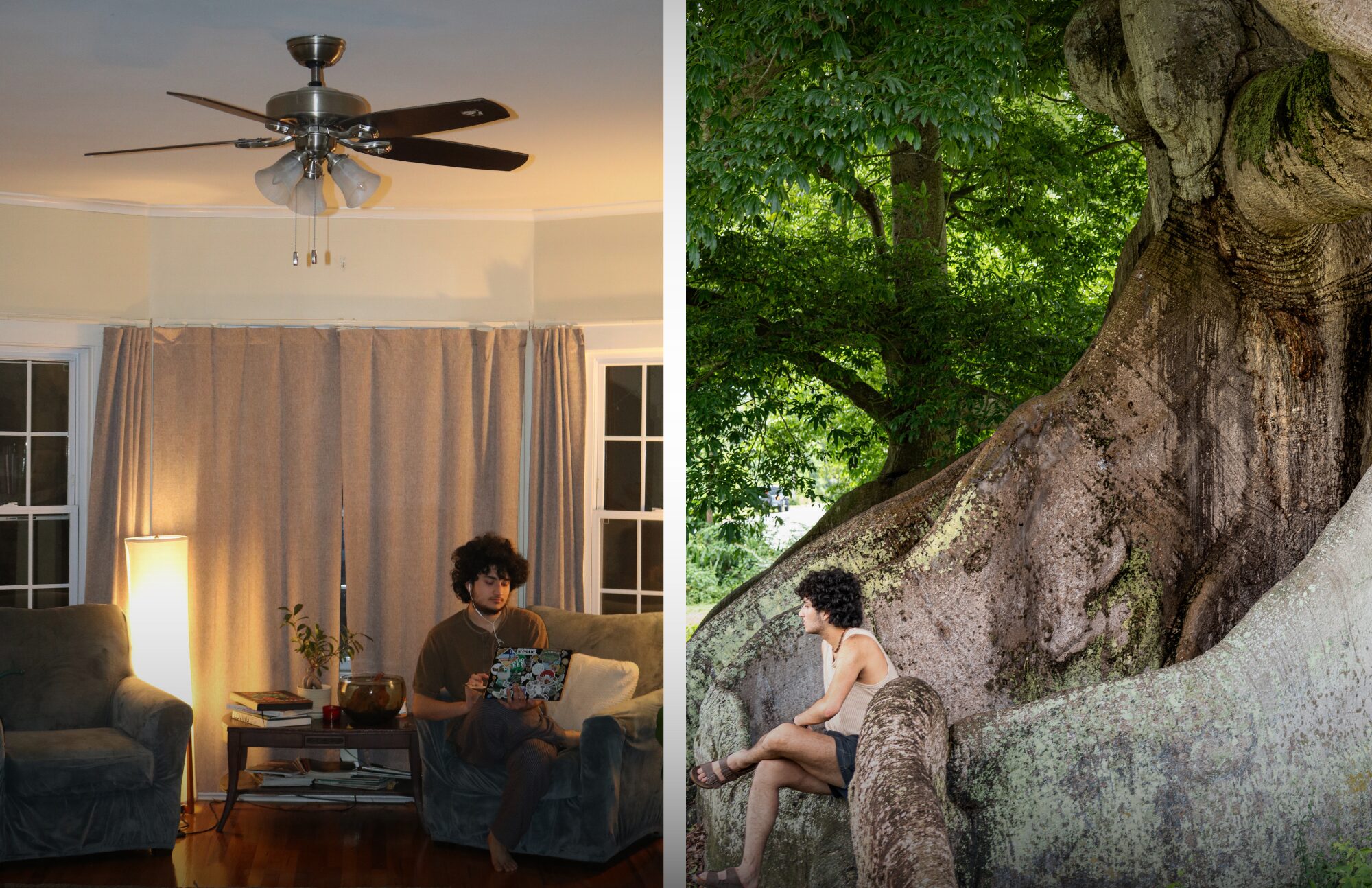Not Quite a CHIP Off the Old Block
CHIP’S Architectural concept is driven by the two sides of the net zero equation: energy production and energy consumption. CHIP’s design is both responsive to the sun in its orientation and massing, while simultaneously expressing the performative duties of its envelope with respect to energy conservation.
The most singular feature of the design is CHIP’s unique exterior envelope strategy: A skin and insulation assembly which turns conventional wisdom on its head, wearing its thermal performance “on its sleeve.” Separating the structural members from the insulating layer, and wrapping the insulation assembly in a flexible vinyl membrane gives CHIP an exterior envelope with the extremely high R-values necessary for a net-zero house, at a significantly reduced cost, while indexing this performance in its physical appearance.
CHIP’s flexible, stepped interior adopts the ethic of “doing-more-with-less”, allowing a single, continuous volume to perform in a variety of different ways to serve the occupants daily needs. The program is divided into a series of platforms which are terraced upward and inwards, from the most public to most private. The distribution of program from north-to-south, and high-to-low, facilitates the occupants’ daily rhythms: a progression downhill in the morning in the form of sleep/groom/dress/eat/live – and vice versa in the evening.
The interior aesthetic and features were designed with the “active Californian” in mind, engaging the occupant, allowing him to interact and customize the space. East interior wall is a canvas of interchangeable cabinets and soft furniture configurable upon occupant needs. Overhead shelf beams serves addition storage options. Bathroom is designed as a wet room featuring swingable wood plank flooring which opens up to reveal a stainless steel bathtub. To live in CHIP means to live with CHIP.
CHIP’s structural designs strikes a balance between the unique geometries of CHIP’s massing and affordability. As with other design elements, the structural design seeks to accomplish its objectives (a simple modular assembly which enables the appearance of a uniform building) in a robust, low-tech fashion, using as many elements from typical Type-V light wood framing construction as possible. Working in collaboration with the engineers at Buro Happold, redundant and unnecessary structure from Type-V assemblies were removed where possible in order to deliver a lighter, more efficient building. The result is a unique structure that uses every-day construction methods to lower the overall cost of construction and transport, while enabling a stable platform for the house’s other design elements.
CHIP’s electrical system is designed to be as simple as possible while still carrying out important house functions at as low of a cost as possible. The photovoltaic (PV) system is designed to meet CHIP’s energy needs using modules over the structure at an ideal tilt. Hanwha Solar PV panels are laid out as needed on over a angled PV rack on the roof which holds up to 45 panels. Through the use of module maximizers and specialized wiring series CHIP maximize PV panel output and reduces energy loss in wiring.
The lighting design is baed on uncompromising quality while using as little energy as possible used LED-type lighting fixtures. Using the Control4 interface, four layers of interior light can be controlled from anywhere in the house. The wireless switches remove the need for complicated 3-way switching.
CHIP’s HVAC(heating, ventilation, and air conditioning) and water systems is designed to maximize energy saving over a typical year of operation in California while leveraging thermal synergy between the two systems. In the house’s design climate, the large majority of HVAC loads are manifested in cooling loads. The core of the system is a thermal storage water tank that acts as both a thermal mass and a heat transfer medium. With the high heat capacity of water, the thermal mass efficiently extracts heat from the HVAC system with a minimum of energy use. In addition, the heated thermal mass preheats the domestic hot water, thus maximizing the combines efficiency of the two systems. In addition, the HVAC system makes use of simple cheap, yet cost-effective technologies that reduce energy use by taking advantage of the California climate. Economizers and whole-house fans substantially reduce cooling demand in the summer and improve occupant comfort at minimal cost and energy consumption.
CHIP’s computing system resembles the central nervous system of the human body; not only can it process and monitor the state of the house, but it can react to changes in the environment as well. The computing system is made up of 4 distinct but interrelated components:
1. Energy Monitoring: The energy use of the house is monitored at a whole house level as well as at an individual circuit level. Using eGuage Monitoring hardware, we can determine where the energy from our PV panels are being used.
2. Control4: Home Automation Nearly all the lights and appliances in the house are hooked up to the Control4 via a Zigbee network. This allows for one centralized location at which every device can be controlled.
3. Prediction and Planning: Data is polled from Internet weather forecasting sites as well as SolarAnywhere to determine that state of energy usage and generation by the HVAC and PV array. This information is passed to a planning algorithm, which then calculates the most effect use of the energy.
4. Home Interface: The Home Interface is a system using Apple iPad and XBOX 360’s Kinect. Custom Ipad Apps are written to provide a “universal remote” that not only allows devices to be controlled, but can display the state of each device and the energy draw of the house. With the Kincet, a custom software package that allows users to control devices in the home using natural gestures such as pointing and waving.
Looking to keep track of Team California?
For access to the entire archive of CalTech SCI-Arc Solar Decathlon 2011 videos: Visit the Member Page




















